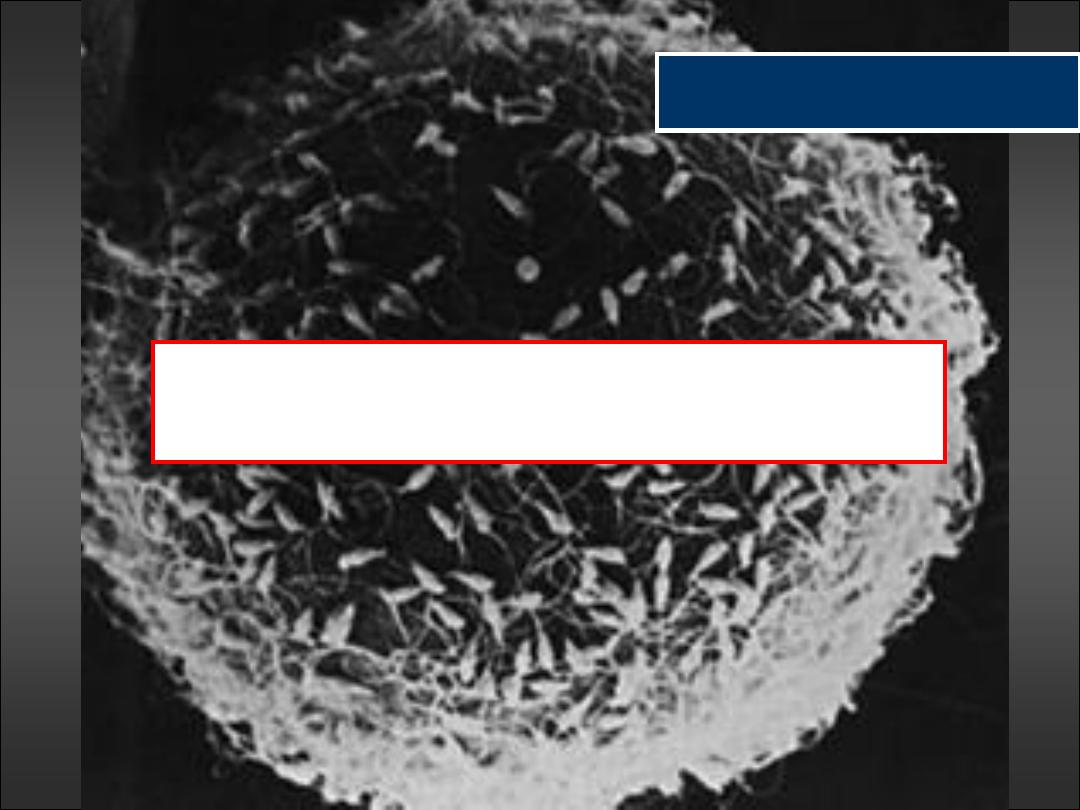
Slide 1
Gametogenesis
Dr. Sumeya

Slide 2
Gametogenesis
–
gamete formation by meiosis.
Spermatogenesis –
Sperm formation (1N)
Oogenesis –
Egg formation (1N)

Slide 3
• Primordial germ cells (PGCs)
Gametes are derived from (PGCs) that are formed
in epiblast during
2
nd
week
& that move to wall of
yolk sac.
During
4th week
, these cells begin to migrate by
amoeboid movement from yolk sac toward
developing gonads, where they arrive by
end of
5th week
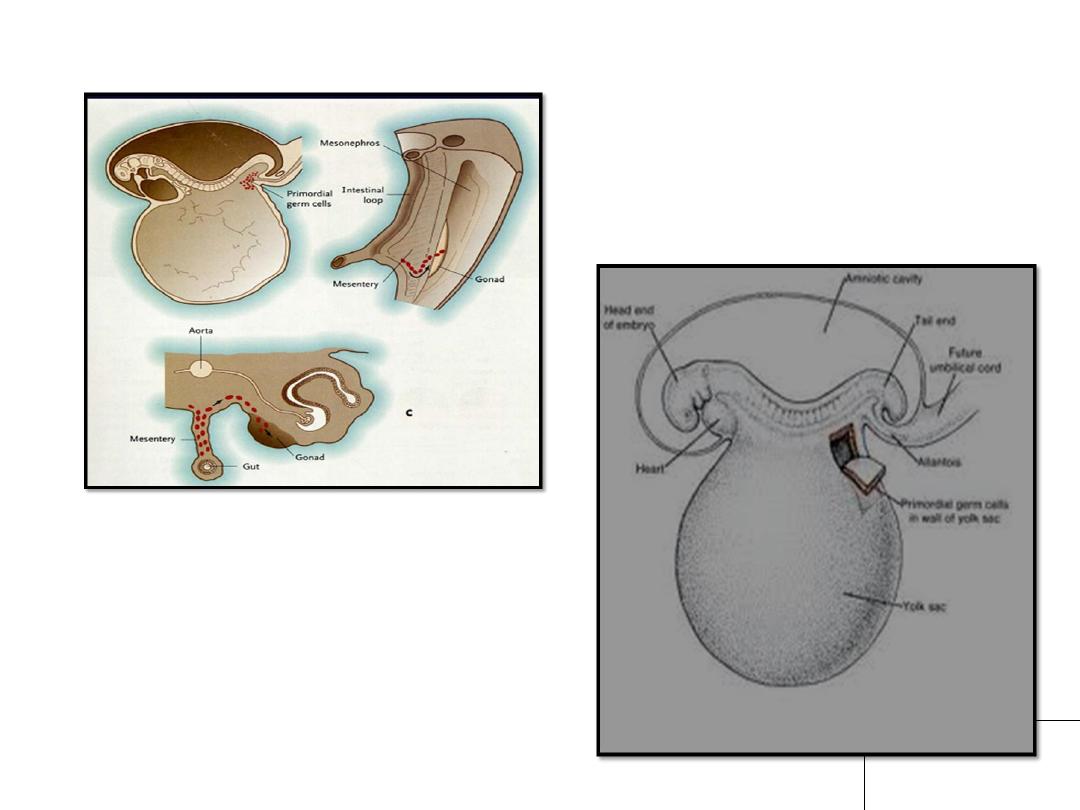
Slide 4

Slide 5
Obgective
• This lecture discuss the steps of sperm
formation from primordial germ cells to
mature spermatozoa, hormonal control and
abnormality of spermatogenesis
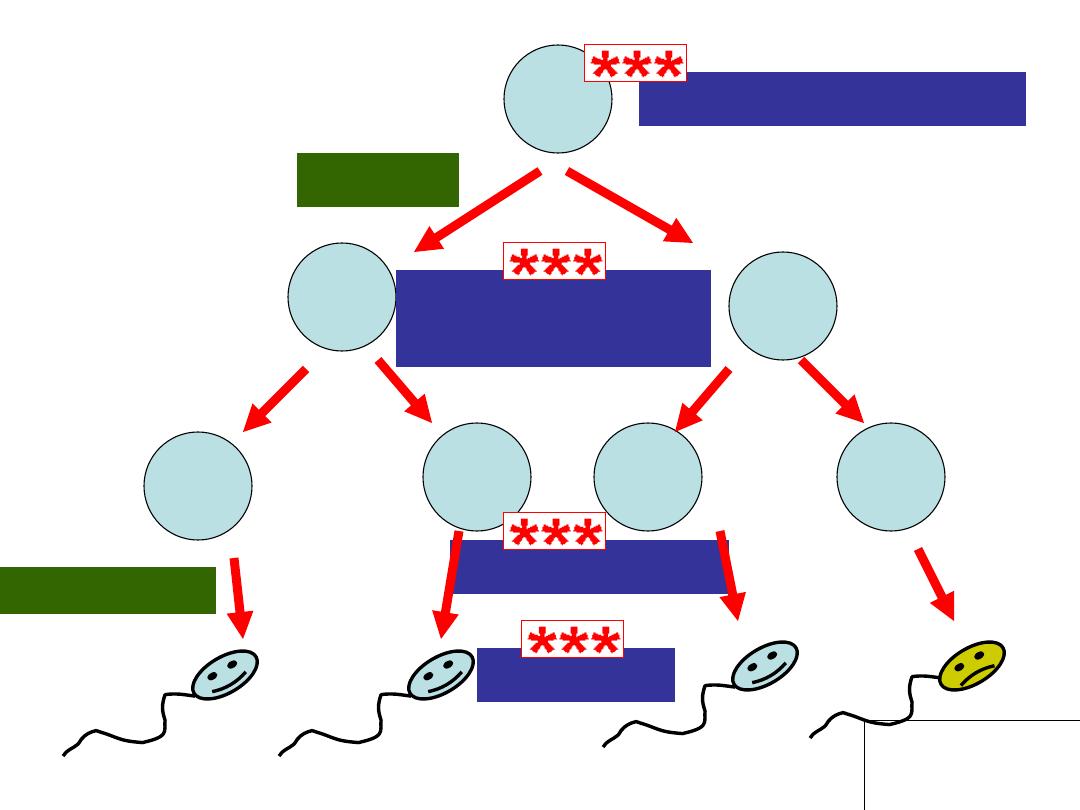
Slide 6
Primary spermatocyte
Secondary
spermatocytes, 2N
Spermatids, 1N
Sperm, 1N
2N
1N
1N
1N
1N
1N
1N
1N
1N
1N
1N
Meiosis
morphogenesis
Spermatogenesis

Slide 7
Spermatogenesis
Maturation of Sperm Begins at Puberty
•
Spermatogenesis, which begins at puberty, includes all of the events
by which spermatogonia are transformed into spermatozoa.
•
It can be divided into 3 phases :
•
a. spermatocytosis
•
b. meiosis
•
C. spermiogenesis
•
At birth, germ cells in the male infant can be recognized in the sex
cords of the testis as large, pale cells surrounded by supporting
cells . Supporting cells, which are derived from the surface epithelium of
the testis become sustentacular cells, or Sertoli cells
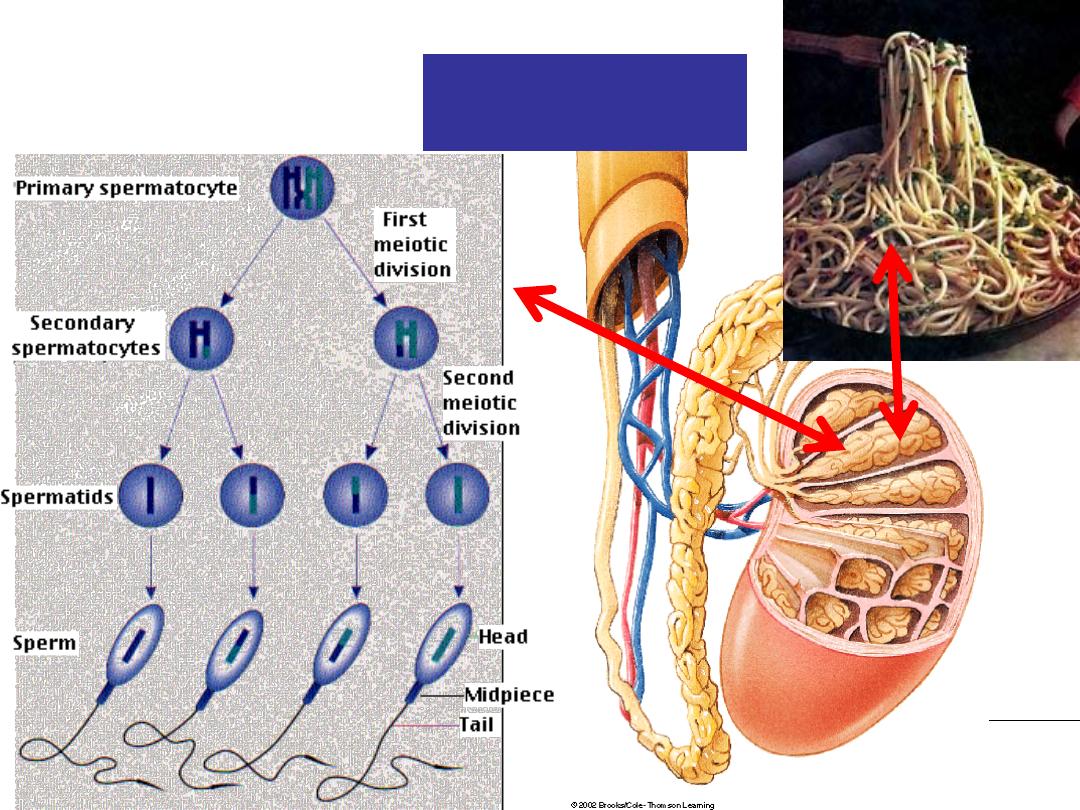
Slide 8
Spermatogenesis
occurs in testes
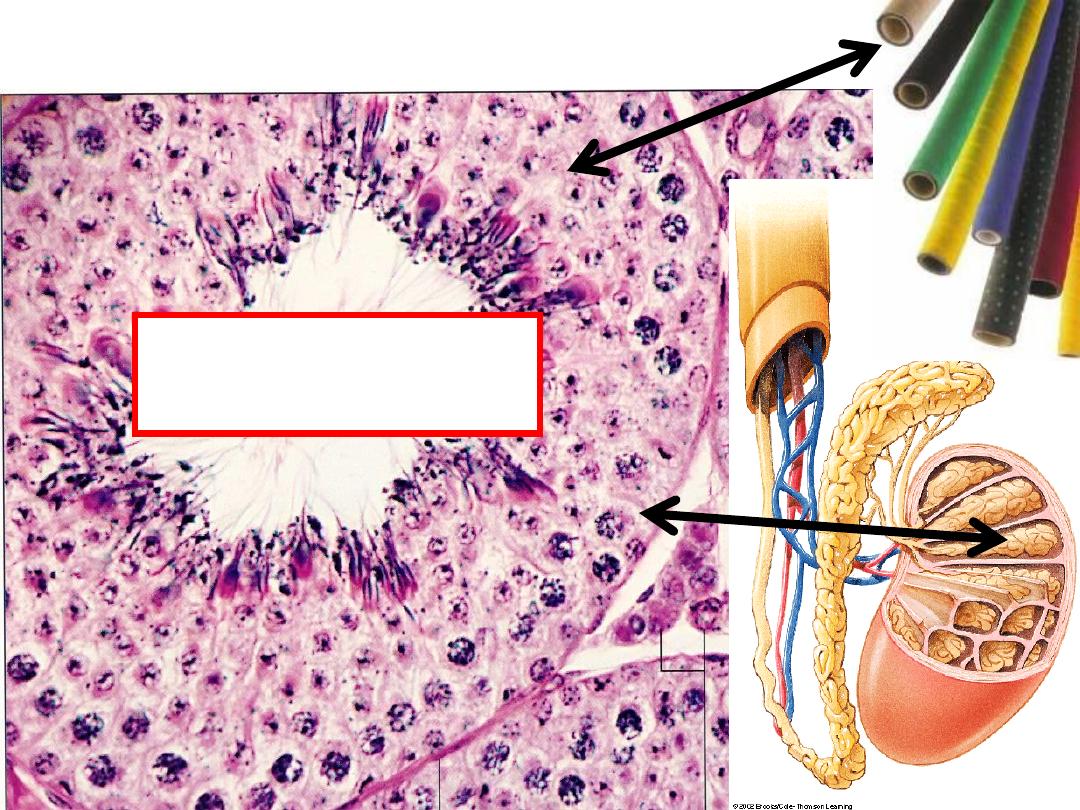
Slide 9
Cross section
through testes’ tubes
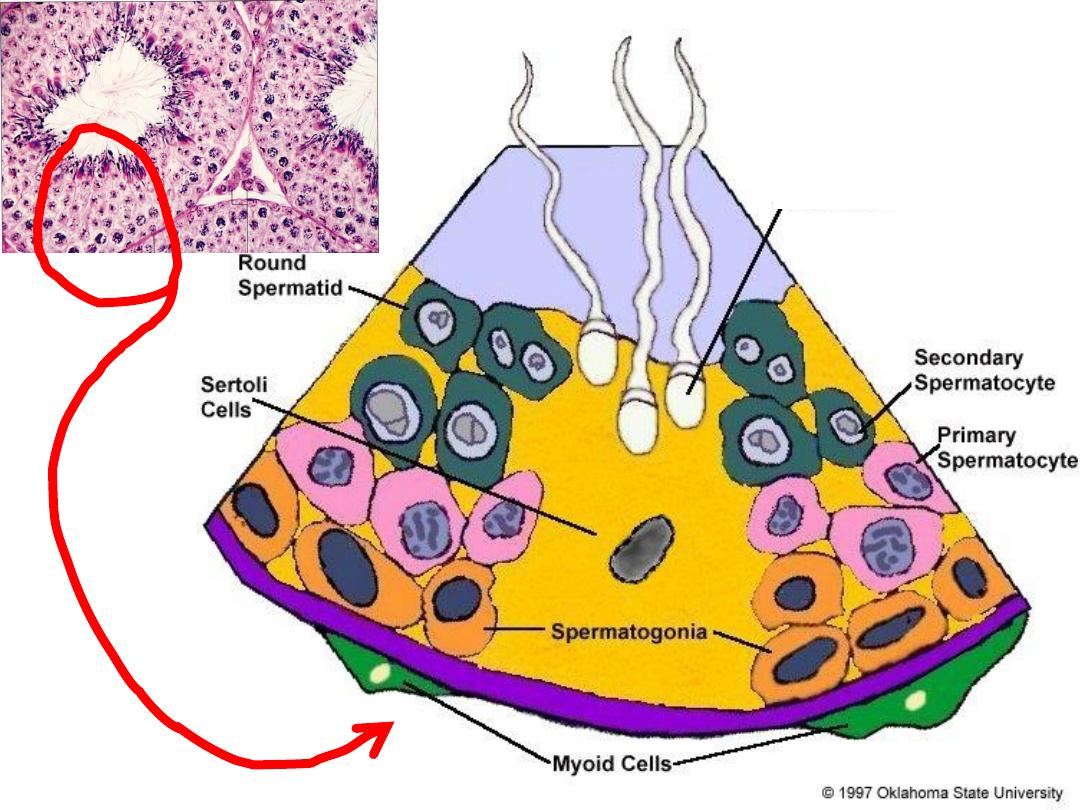
Slide 10
sperm
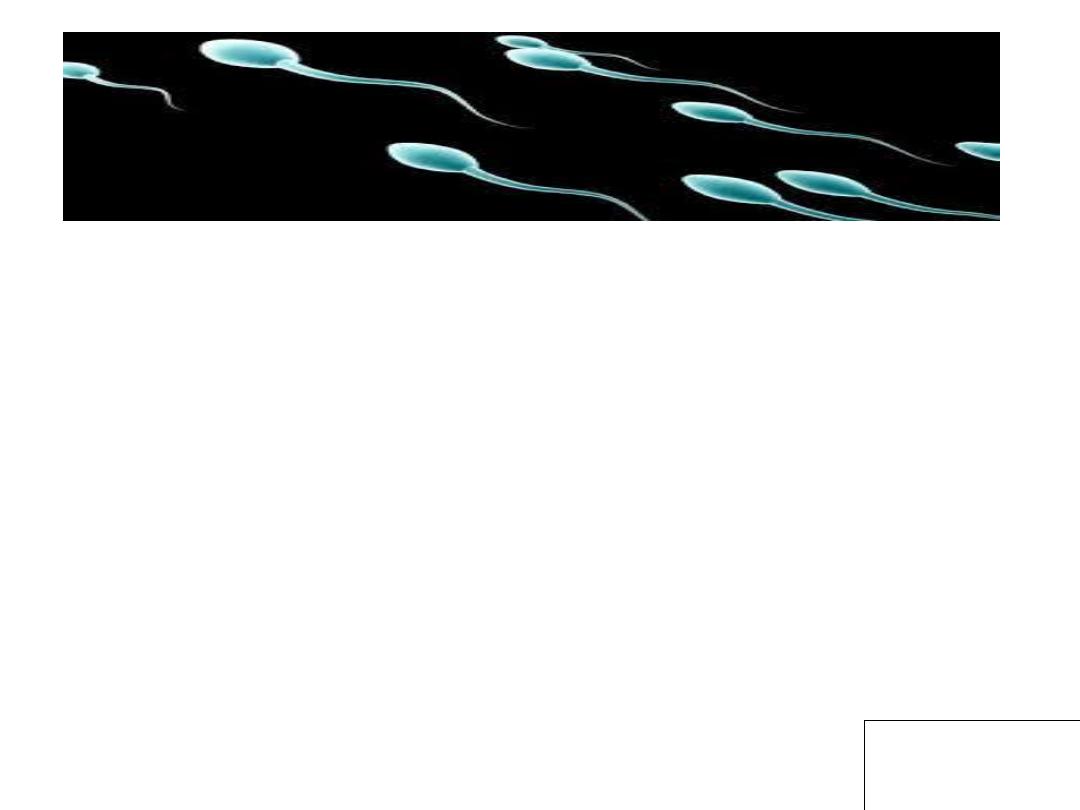
Slide 11
• Shortly before puberty, the sex cords acquire a lumen and
become the
seminiferous tubules
. At about the same time,
PGCs give rise to spermatogonial stem cells. At regular
intervals, cells emerge from this stem cell population to form
type A spermatogonia
, and their production marks the initiation
of spermatogenesis.
•
Type A cells undergo a limited number of mitotic divisions to
form clones of cells. The last cell division produces
type B
spermatogonia
, which then divide to form
primary
spermatocytes
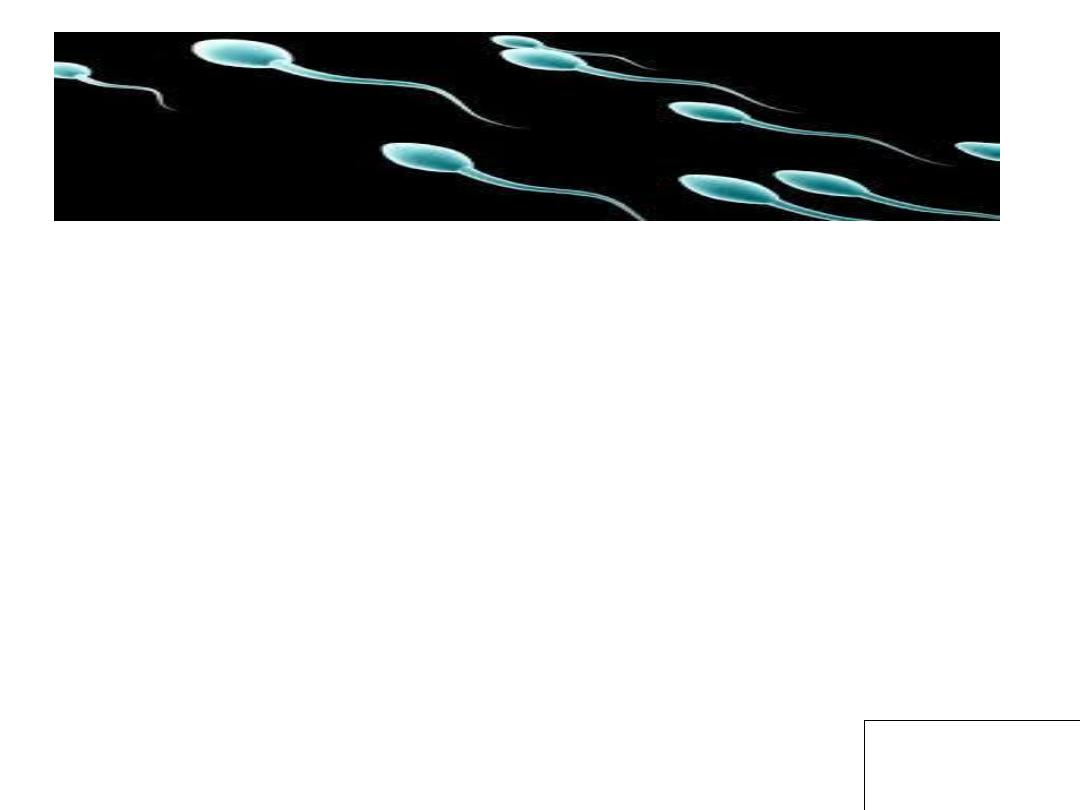
Slide 12
• spermatocytes then enter a prolonged prophase (22 days)
followed by rapid completion of meiosis I and formation of
secondary spermatocytes
. During the second meiotic division,
these cells immediately begin to form haploid
spermatids .
Throughout this series of events, from the time type A cells leave
the stem cell population to formation of spermatids, cytokinesis is
incomplete, so that successive cell generations are joined by
cytoplasmic bridges.
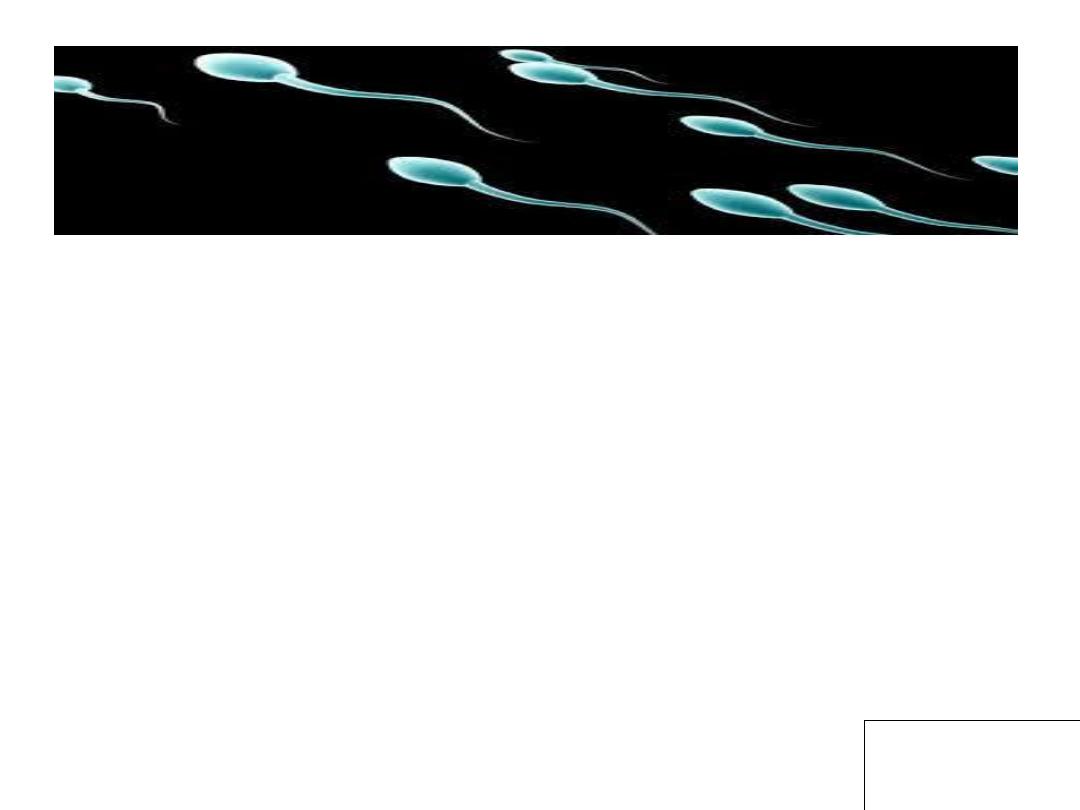
Slide 13
• Furthermore, spermatogonia and spermatids remain embedded
in deep recesses of Sertoli cells throughout their development).
In this manner, Sertoli cells support and protect the germ cells,
participate in their nutrition, and assist in the release of mature
spermatozoa.
• Spermatogenesis is regulated by LH production by the pituitary
gland. LH binds to receptors on Leydig cells and stimulates
testosterone production, which in turn binds to Sertoli cells to
promote spermatogenesis.
Follicle-stimulating hormone
(FSH)
is also essential because its binding to Sertoli cells
stimulates testicular fluid production and synthesis of
intracellular androgen receptor proteins.
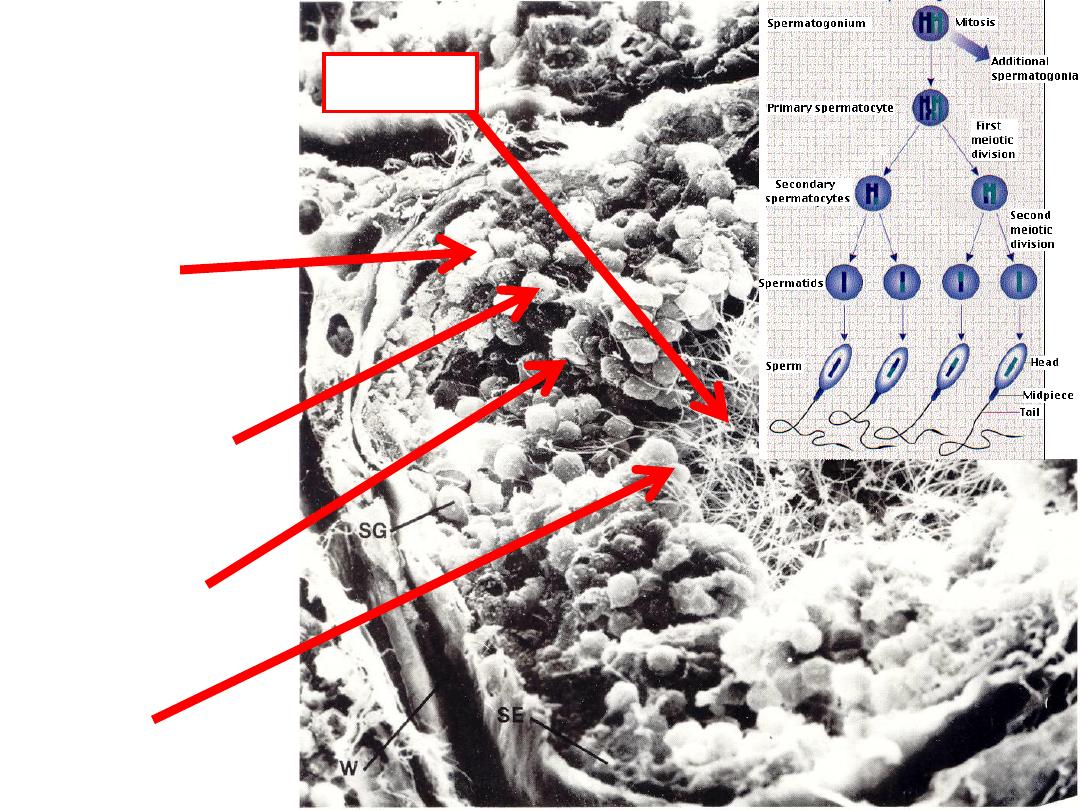
Slide 14
Primary
Spermatocyte
Secondary
Spermatocyte
Spermatid
Sperm
flagella
2N
1N
1N
1N
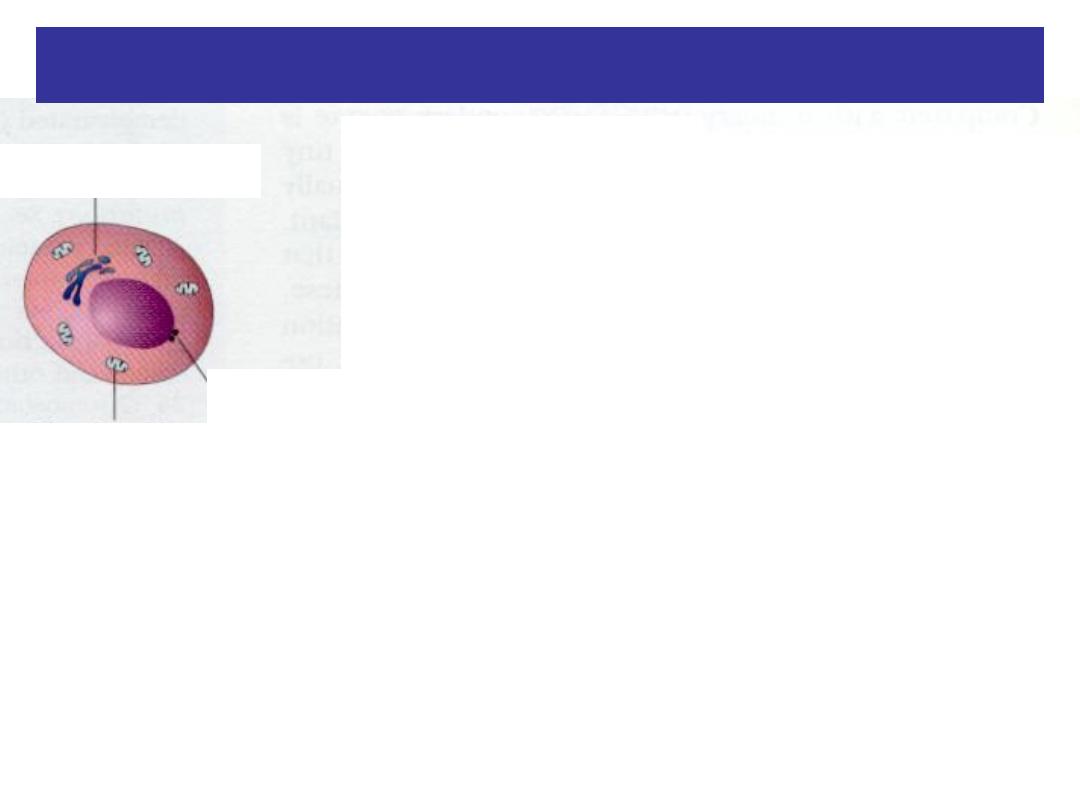
Slide 15
Sperm morphogenesis (change of shape)
nucleus
mitochondrion
Golgi complex

Slide 16
Spermiogenesis
• The series of changes resulting in the transformation of
spermatids into spermatozoa is
spermiogenesis
. These
changes include
• (1) formation of the
acrosome
, which covers half of the nuclear
surface and contains enzymes to assist in penetration of the egg
and its surrounding layers during fertilization
• (2) condensation of the nucleus;
• (3) formation of neck, middle piece, and tail
•
(4) shedding of most of the cytoplasm as residual bodies that
are phagocytized by Sertoli cells.
• In humans, the time required for a spermatogonium to develop
into a mature spermatozoon is approximately 74 days, and
approximately 300 million sperm cells are produced daily.
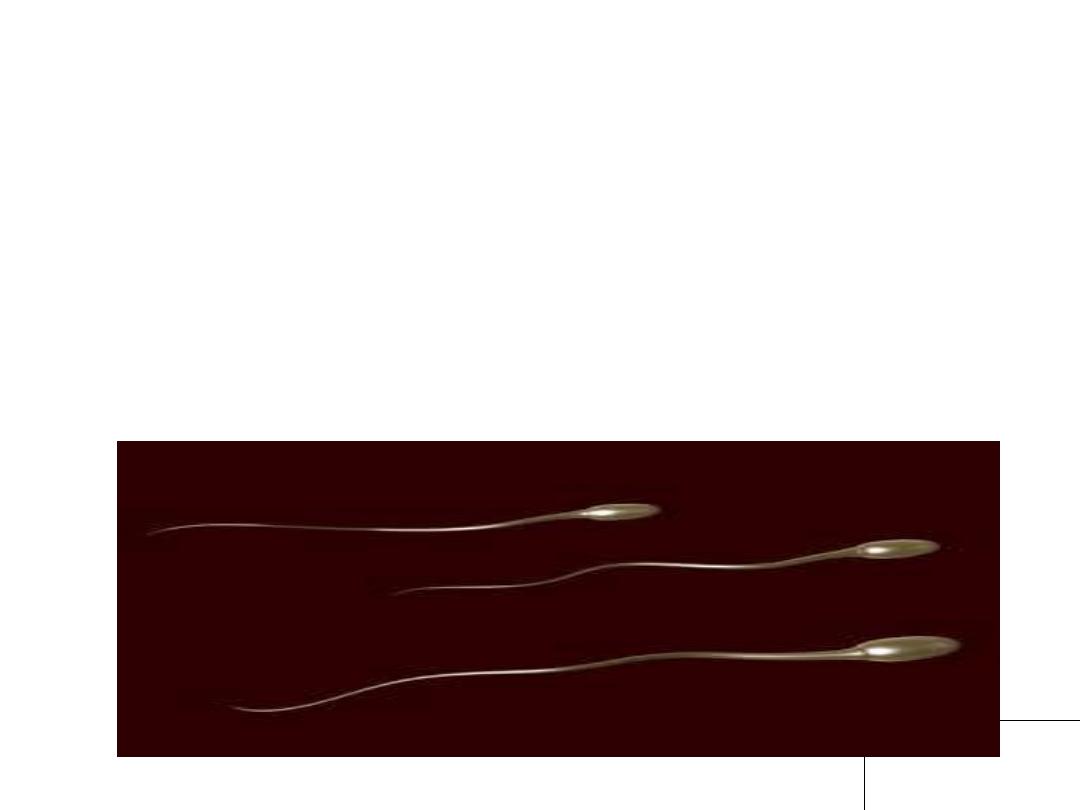
Slide 17
• When fully formed, spermatozoa enter the lumen of
seminiferous tubules. From there, they are pushed toward the
epididymis by contractile elements in the wall of the
seminiferous tubules. Although initially only slightly motile,
spermatozoa obtain full motility in the epididymis.

Slide 18
Spermatogenesis is regulated by
LH production by the pituitary gland
.
LH binds to receptors on Leydig
cells and stimulates testosterone production, which in turn binds to Sertoli
cells to promote spermatogenesis.
Follicle-stimulating hormone (FSH)
is also essential because its binding to
Sertoli cells stimulates testicular fluid production and synthesis of
intracellular androgen receptor proteins.
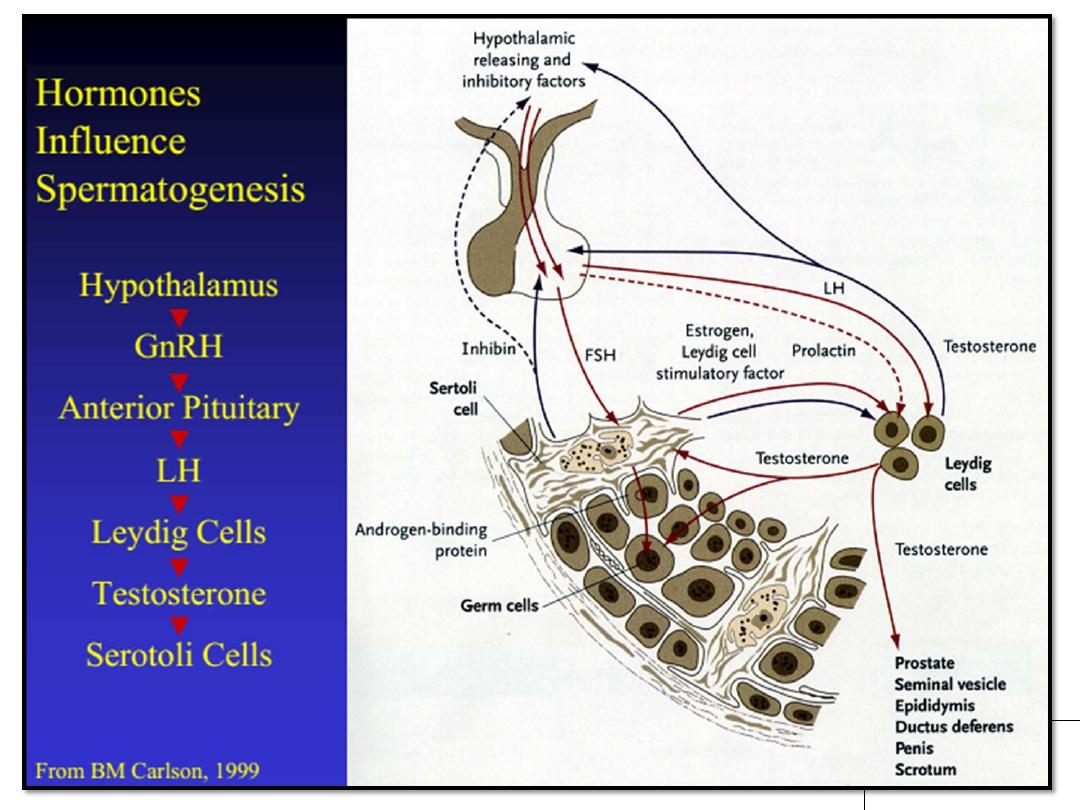
Slide 19
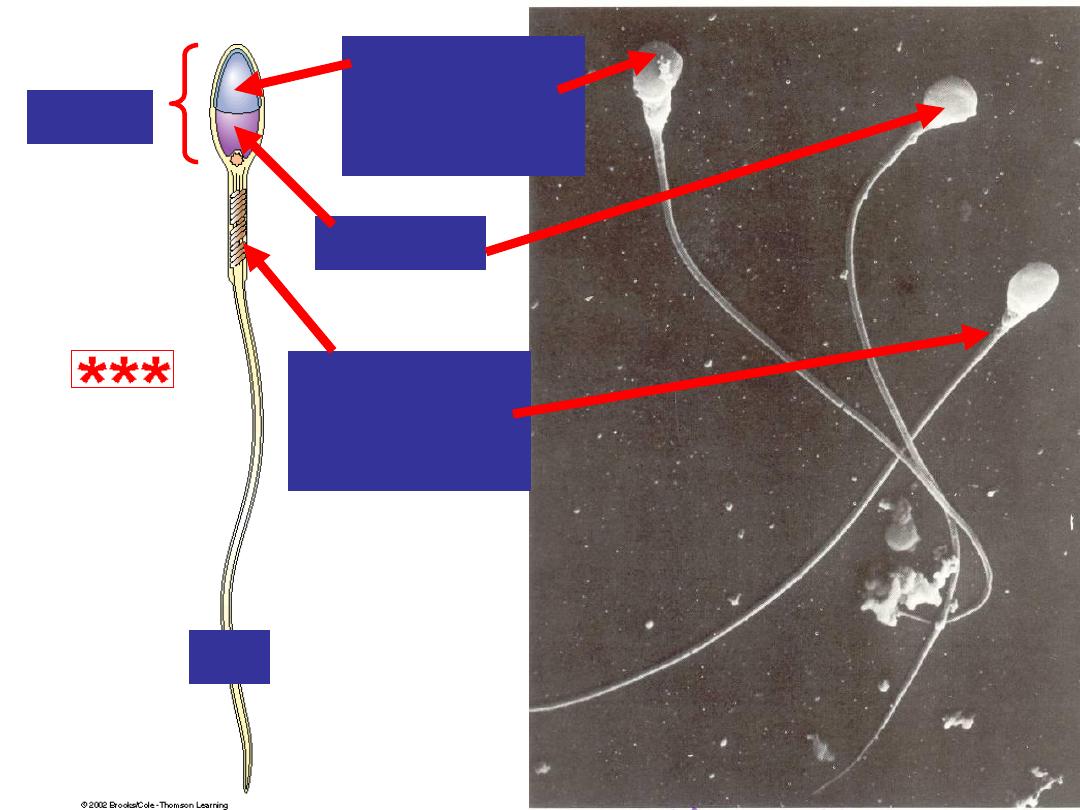
Slide 20
tail
Acrosome
with digestive
enzymes
nucleus
Middle piece
with
mitochondria
Head
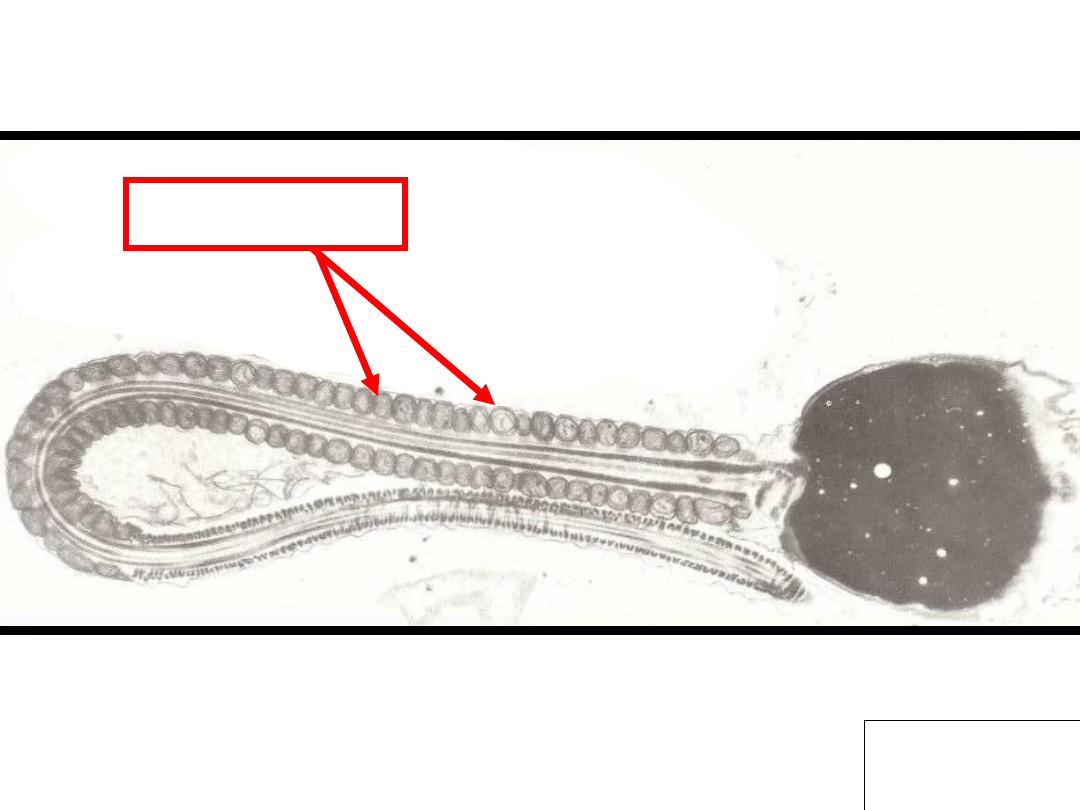
Slide 21
Mitochondria
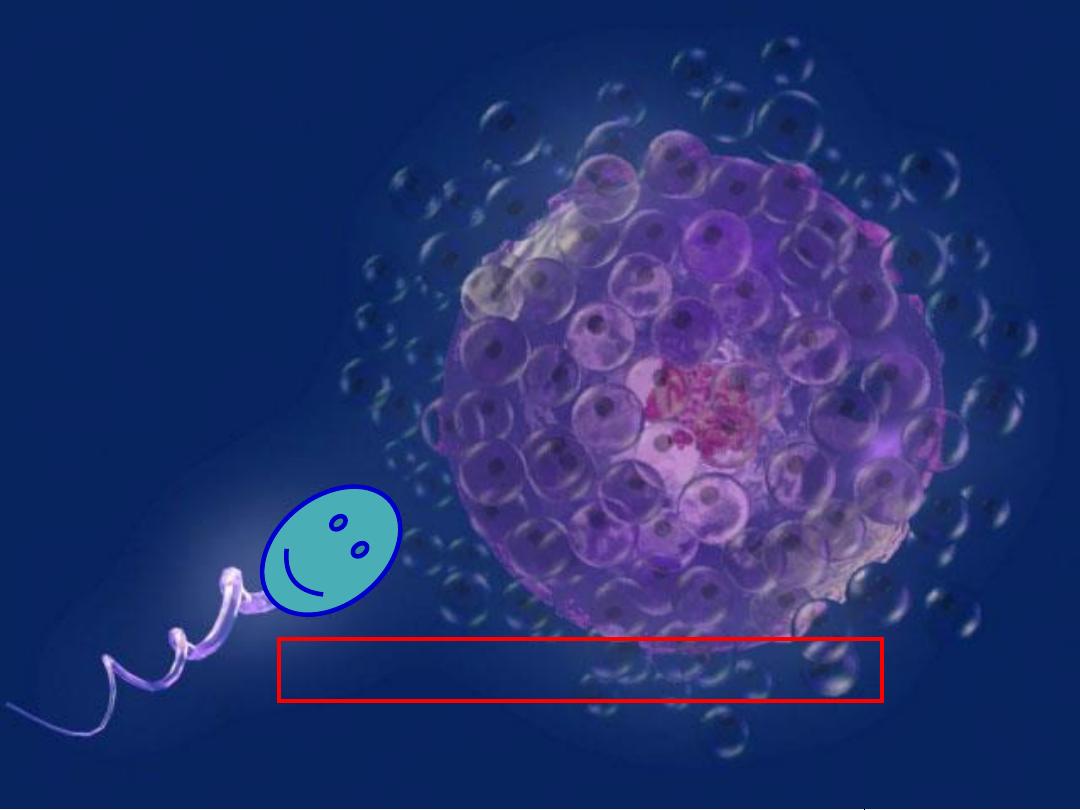
Slide 22
THANK YOU
